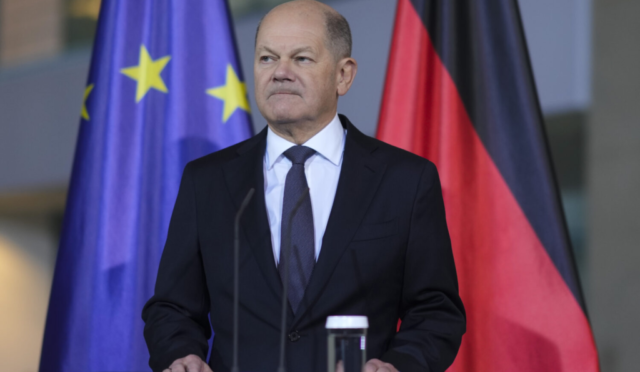Iran’s Resurgence in Syria: Unpacking the Challenges Ahead
The recent upheaval in Syria, marked by the downfall of President Bashar al-Assad’s regime, has raised questions about Iran’s diminishing influence in the region. Following Assad’s exit in December, forces linked to Iran’s Islamic Revolutionary Guard Corps (IRGC) have significantly retreated. The new de facto leadership, under Ahmed Al Sharaa, has signaled a strong stance against any Iranian resurgence, alarming both regional adversaries and international observers. While the U.S. has cautiously welcomed these shifts, it is crucial not to underestimate the potential for Iran to regain its foothold amidst ongoing instability.
The complexity of Syria’s internal security landscape presents Iran with potential pathways for re-engagement. With the fall of Assad’s regime, members of the Alawite sect have expressed fears of persecution by the new administration, leading to a rise in violence from both vigilante groups and security forces. While some Alawite leaders remain optimistic about government stability, there is a palpable tension that could fuel further unrest and disrupt the fragile security situation. The likelihood of clashes could open a window for Iran to supply support to local insurgents, thus reshaping the strategic dynamics in the region.
Escalating Insurgency
As the security situation deteriorates, Iran might strategically exploit the intensified insurgency within Syria. Isolated incidents of violence against Alawite groups have morphed into a more organized resistance, suggesting a potential rallying point for Iranian forces to reinsert themselves. Reports indicate a troubling trend of anti-government militias engaging in battles with security forces, which could lead Iran to see an opportunity for the reinvigoration of Shiite militia factions in Syria. Commentary from pro-regime analysts emphasizes that any attacks on Shiite sanctuaries represent a significant provocation, potentially justifying Iranian re-engagement.
Moreover, the Iranian-led ventures are not only about bolstering local groups but also about maintaining logistical connections across the region. Iran has already resumed efforts to smuggle arms to its ally Hezbollah in Lebanon, a movement complicated by Syria’s increasingly chaotic environment. As tensions mount and security resources are stretched thin, the sustainability of counter-smuggling operations becomes precarious, inviting a possible Iranian reestablishment of influence in the supply chain.
Future of the SDF
The intense clashes between U.S.-backed Syrian Democratic Forces (SDF) and the Turkish-backed Syrian National Army add another layer of complexity to the already volatile Syrian landscape. With ISIS remnants still posing a threat, U.S. officials are increasingly concerned that these hostilities could create an opening for a renewed ISIS resurgence, disrupting the fragile balance of power in northern Syria. As the negotiations for integrating SDF-controlled areas into the new Syrian government stall, minor skirmishes with regime forces have escalated, potentially igniting a more widespread conflict.
If efforts to reach an understanding fail, both the SDF and the Syrian government may take more aggressive stands to secure their interests, further complicating the security fabric. This shifting focus could dilute the capacity of Syrian security forces to confront Iranian activities, inadvertently allowing Iran to rebuild its military supply lines to Hezbollah and strengthen its influence.
Economic Threats
While the security situation remains a focal point of concern, economic factors also present a significant challenge for U.S. interests in Syria. Reports indicate that Iran is pressuring the nascent Syrian administration to honor alleged debts incurred by the Assad regime, which could amount to $30 billion. The Syrian government has countered that these debts were incurred to sustain oppressive practices against its people and are therefore illegitimate. Nevertheless, historically, successor administrations have had to cope with the financial obligations of their predecessors, which raises alarm about Iran’s economic leverage.
Should the U.S. fail to confront these Iranian demands, it may inadvertently legitimize Tehran’s co-opting of Syria’s economy. The ramifications of this could further complicate the United States’ efforts to limit Iranian influence and could hinder any prospects of a stable Syrian governance framework.
The Long Game in Syria
Despite the current setbacks, Iran’s aspirations in Syria are far from over. Although its influence may not replicate the level seen under Assad, assertions that Tehran’s involvement is at an end are overly optimistic. Iran continues to embed itself in various Syrian institutions and possesses a nuanced understanding of the local political and military landscapes. While Iranian leadership might adopt a more tactical approach at this juncture, their long-standing patterns suggest that direct military engagement remains their preferred mode of operations.
As the incoming U.S. administration crafts its strategy to counter Iran, it is vital to consider the role of Syria as a critical element shaping the overall policy framework. Ignoring the implications of Iranian actions in Syria could lead to a pivotal misstep in addressing Iran’s regional ambitions, suggesting that a comprehensive approach is necessary for U.S. interests moving forward.






